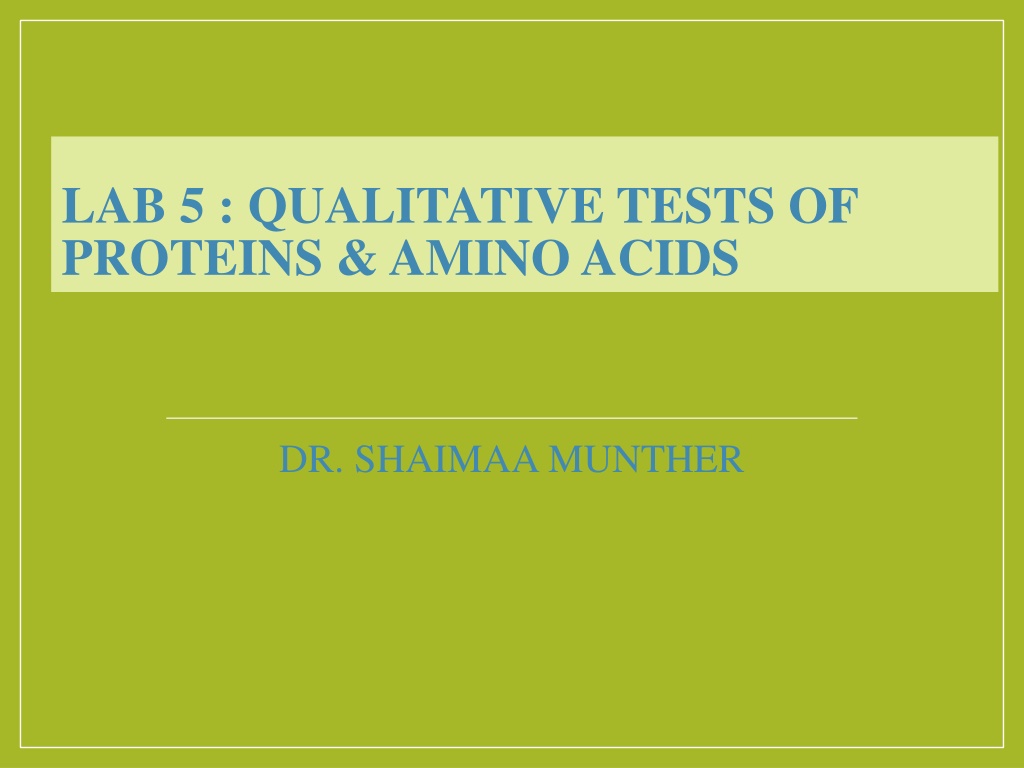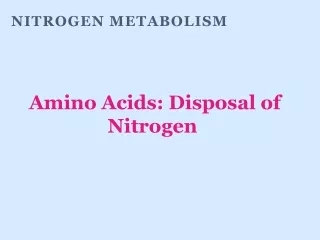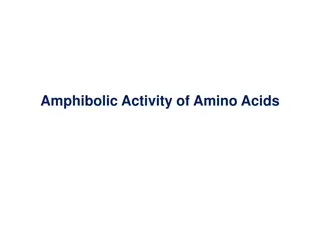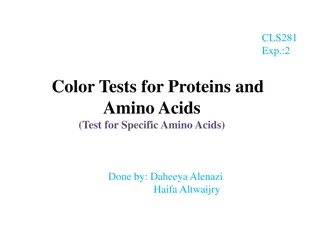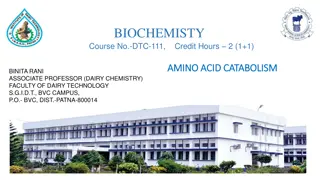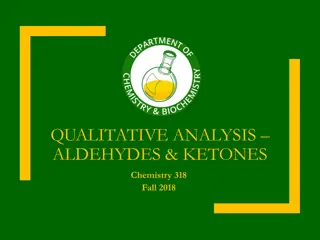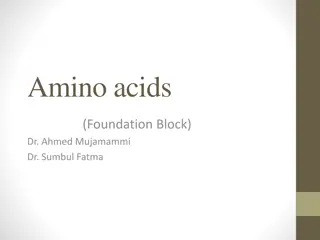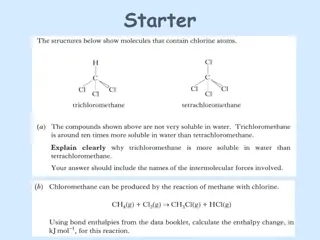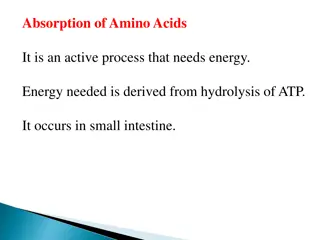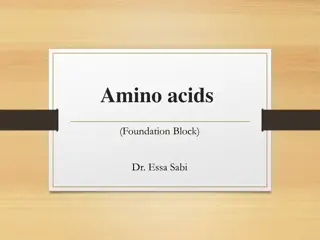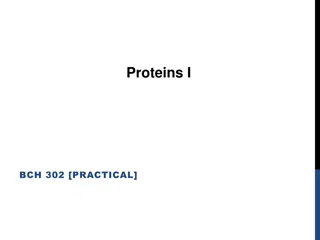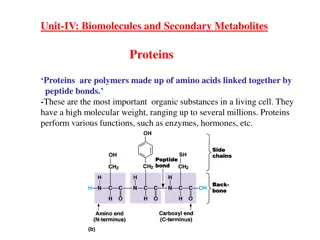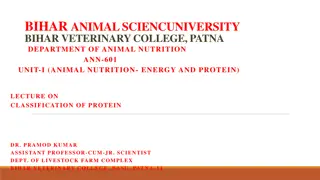Qualitative Tests of Proteins & Amino Acids - Lab Analysis Overview
This lab analysis covers qualitative tests for proteins and amino acids, including solubility tests and identification tests for amino acids and proteins. Specific tests like Ninhydrin test for -L amino acids, Xanthoproteic test for aromatic amino acids, and lead sulfite test for sulfhydryl group detection are discussed. The principle and procedure for these tests along with their significance in identifying proteins and amino acids are outlined.
Download Presentation

Please find below an Image/Link to download the presentation.
The content on the website is provided AS IS for your information and personal use only. It may not be sold, licensed, or shared on other websites without obtaining consent from the author. Download presentation by click this link. If you encounter any issues during the download, it is possible that the publisher has removed the file from their server.
E N D
Presentation Transcript
LAB 5 : QUALITATIVE TESTS OF PROTEINS & AMINO ACIDS DR. SHAIMAA MUNTHER
Amino acids & Protein Analysis A. Solubility test. B. Identification tests for amino acids : There number of test to detect the presence of amino acid ,These are largely depend on the nature of amino acids side chain usually. Example of these tests are : Ninhydrin test: for -L amino acids 1. Xanthoproteic test: for Aromatic amino acids 2. Lead sulfite test: detection of amino acids containing sulfhydryl group (-SH) 3. Millon's test: for amino acids containing hydroxy phenyl group 4. C. Identification tests for proteins : The presence of proteins in a solution is often detected by general tests, such as biuret or specific tests that depend on the presence of a specific proteins.
Ninhydrin Test Principle: 1.Ninhydrin (triketohydrindene hydrate) degrades amino acids into aldehydes (on pH range 4), ammonia and CO2 though a series of reactions. 2. The reducon product obtained from ninhydrin then reacts with NH3 and excess ninhydrin to produce an intensely blue or purple pigment, or coler. This reaction provides an extremely sensitive test for amino acids. alpha-amino acid + 2 ninhydrin CO2+ aldehyde + final complex(BlUE) + 3H2O
Ninhydrin Test The imino acids proline and hydroxyproline also react with ninhydrin, but they give a yellow colored complex instead of a purple one. Besides amino acids, other complex structures such as peptides, peptones and proteins also react positively when subjected to the ninhydrin reaction. Ninhydrin ethanol reagent is flammable. Toxic, and irritant. Keep away from bunsen burner, flames , prevent eye, skin, clothing contact. Avoid inhaling the vapors or ingesting the reagent.
Procedure To 1 mL solution add 5 drops of 0.5 % ninhydrine solution Boil over a water bath for 2 min. Allow to cool and observe the blue color formed. Results: blue or yellow color in case of proline
Xanthoproteic Test : Objective: To differentiate between aromatic amino acids which give positive results [yellow color] and other amino acids. Principle: Concentrated nitric acid react with aromatic nucleus present in the amino acid side chain [nitration reaction] giving the solution yellow color. Note: Amino acids tyrosine and tryptophan contain activated benzene rings [aromatic nucleus] which are easily nitrated to yellow colored compounds. The aromatic ring of phenyl alanine dose not react readily with nitric acid despite it contains a benzene ring, but it is not activated, therefore it will not react
Procedure To 2 mL amino acid solution in a boiling test tube, add concentrated HNO3. equal volume of Heat over a flame for 2 min and observe the color.
Hopkins-Cole (Glyoxylic Acid Reaction) Aim: Specific for tryptophan (the only amino acid containing indole group) Principle: Reacting with a glyoxylic acid in the presence of a strong acid, the indole ring forms a violet cyclic product. The protein solution is hydrolyzed by conc. H2SO4 at the solution interface. Once the tryptophan is free, it reacts with glyoxylic acid to form violet product.
Procedure In a test tube, add to 2 ml of the solution an equal volume of Hopkins- Cole reagent and mix thoroughly. Incline the tube and let 5 to 6 ml of conc. H2S04 acid flow slowly down the side of the test tube, thus forming a reddish - violet ring at the interface of the two layers. That indicates the presence of tryptophan 1. 2.
